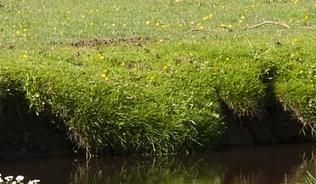Estimating emissions from atmospheric observations, commonly referred to as 'top-down' or inverse modelling, is a relatively new area of science. Greenhouse and ozone-depleting gases are particularly aligned with inverse modelling because they are, by their very nature, long-lived in the atmosphere. Through continued funding from the UK government, the Met Office working with the University of Bristol have provided 'top-down' emission estimates for a comprehensive set of Greenhouse and ozone-depleting gases since 2003, to complement and compare to the mandated 'bottom-up' national emissions inventories.
The UK was the first country to report these results annually as part of their national submission to the United Nations Framework Convention on Climate Change. This work is gaining more and more interest as countries set ambitious targets to reduce emissions and move to net-zero, as verifying progress towards these targets is an attractive option.
In this webinar, Alistair Manning presented the work they're undertaking comparing top-down and bottom-up emissions inventories and how both approaches can work in synergy to gain a better understanding of national emissions.





